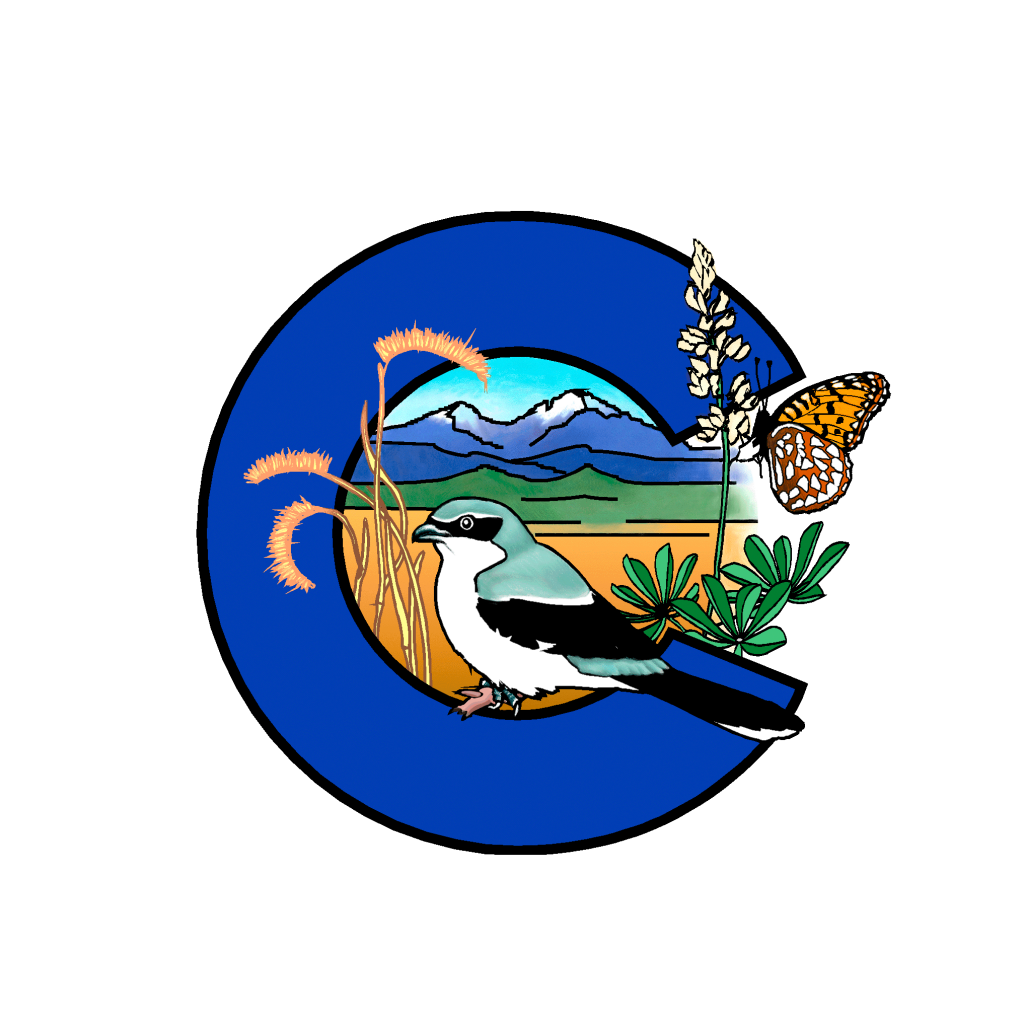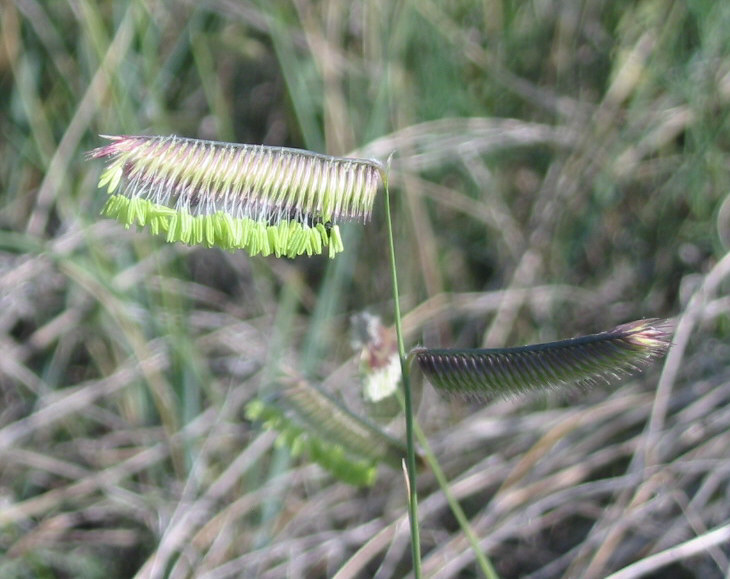By: Sierra Crumbaker
(Colorado Natural Heritage Program)
A Closer Look at CNHP’s Logo
If you’ve ever been to a CNHP event, you’ve likely been offered a sticker of the colorful, round logo that embodies the ecology, botany and zoology work CNHP is committed to. (If you haven’t been offered one, just ask — there’s usually a whole box of them in the back supply room.) But after slapping it onto your water bottle or laptop, how closely do you notice what it contains?

CNHP Logo 
Blue grama (Bouteloua gracilis) in flower. (Photo credit: Crystal Strouse)
This and the following four blog posts are a mini-series introducing you to the animals, plants and landscapes of the CNHP logo and their value to our beautiful Colorado playground. On the chance someone asks you about the logo, you’ll not only be able to explain the ambitions of CNHP, but some fun facts about these cool Colorado natives, too.
Blue Grama
The state of Colorado gets to claim many things as its own: a state fossil, a state mineral, a state animal . . . even a state tartan and a state summer heritage sport. But did you know that Colorado also has a state grass?
Officially granted its title in 1987, blue grama grass (Bouteloua gracilis) is an icon throughout Colorado, both west and east of the Rocky Mountains. This grass is nicknamed “lamb’s eyelashes” or “eyelash grass” due to the unique arrangement of sharp, curved spikelets off the rachis that give its inflorescence the thick but delicate appearance of an eyelash. This feature is easy to identify out in the field, and in the summer, tiny, green flowers can be seen hanging from the spikelets.
Beyond its stylish looks, blue grama is valued for being incredibly nutritious for native and domestic grazers and highly tolerant to drought — even more so than pasture grasses planted for livestock. In droughts and well into the dormant season, it still holds its nutrition unlike many other grasses, making it an excellent source of food for wildlife throughout the year. It is the quintessential upland prairie grass and does not do well with shade, saturated soils or flooding.
While the grass averages a height of around a foot, it is just the tip of the iceberg. Most of the plant is below ground in an expansive root system (sometimes up to six feet deep!) that not only holds down soils during torrential rains and windstorms but provides a great environment for soil microbes and nematodes. These in turn maintain a healthy, stable soil and prairie.
Consider planting blue grama and other native grasses instead of turf grass in your yard. Since Colorado has such a dry climate, utilizing drought resistant grasses helps cut back on water usage and eliminates extra costs required to maintain ornamental plants. It also makes for an inviting habitat to local animals and insects.
If you ever have questions about a plant, stop by the botany office at CNHP to ask one of the wonderful botanists. They can tell you all kinds of amazing things you’d never dream of.
Here are a few more resources if you’d like to know more about eyelash grass:
- https://plants.sc.egov.usda.gov/core/profile?symbol=BOGR2
- https://statesymbolsusa.org/symbol/colorado/state-plant/blue-grama-grass
- https://coloradoplants.jeffco.us/plant/details/99
This article is part of mini series about five species/things in our logo that embodies the ecology, botany and zoology work CNHP is committed to.

- CNHP’s Logo Part 1: Bat an Eyelash, Blue Grama
- CNHP’s Logo Part 2: Nature’s Little Serial Killer, the Loggerhead Shrike
- CNHP’s Logo Part 3: Payson Lupine and Silvery Lupine
- CNHP’s Logo Part 4: Royalty in Decline, the Regal Fritillary
- CNHP’s Logo Part 5: Pinnacle of Rocky Mountain National Park, Longs Peak




